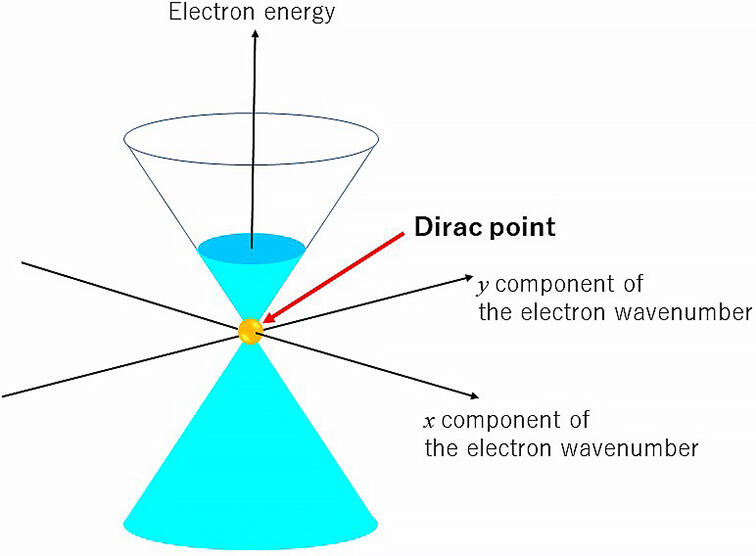The collaborative research group including NTT, the National Institute for Materials Science (NIMS), Université Paris-Sacla in France, CEA (French Alternative Energies and Atomic Energy Commission), and Néel Institute successfully determined a huge diamagnetic effect in monolayer graphene for the first time and determined new experimental findings on the role played by geometrical topologies. The study demonstrated the importance of topology in graphene, and the results were published online in Science on December 10.
Diamagnetism is a phenomenon in which magnetization occurs in the opposite direction to a magnetic field applied from the outside. Graphene is made by thinning graphite to one atomic layer, and there is a special relationship between the energy and momentum of electrons in graphene, where triangular pyramids, also known as Dirac cones, are in contact, the so-called "Dirac point". It has been theoretically predicted for more than 60 years that the Dirac point of graphene behaves as a geometric singularity and generates enormous diamagnetism. The theory showed that ideal graphene with zero temperature and no impurities exhibited infinite diamagnetism at the Dirac point. However, as actual experiments are carried out at a finite temperature and impurities are present in the device, the theory has not been able to be proved so far.

Provided by NTT
In this study, the collaborative research group produced an extremely clean graphene element by protecting both sides of graphene with hexagonal boron nitride. This is the first aspect of successful observation in this study. Then, the graphene element was placed on a magnetic sensor that uses the giant-magnetoresistance (GMR) effect, and the diamagnetic response was measured. When a diamagnetic response occurs, a magnetic field is created by the rotation of electron orbits in the graphene, and the component of this magnetic field parallel to the graphene plane changes the direction of the magnetization of the ferromagnetic thin film used in the GMR device. In the GMR device, the resistance changes depending on the relative direction of the magnetization of the two layers of the ferromagnetic thin film that constitute the element; thus, the diamagnetic response can be observed in the form of an electrical signal.
In the actual measurement, the magnetic field created by the diamagnetic response of graphene was observed by measuring the resistance change of the GMR device while applying a magnetic field along the vertical direction to the graphene. This was successfully proven for the first time. As the diamagnetic response creates a magnetic field perpendicular to the graphene plane, it is intuitively considered appropriate to observe the magnetic field along the direction perpendicular to the plane. However, it is embedded in the external magnetic field applied to cause diamagnetism, and its precise measurement is difficult to achieve. However, the research group successfully determined the demagnetizing field generated from graphene by measuring the magnetic field along the in-plane direction instead of the in-plane direction with a high-sensitivity magnetic sensor based on a GMR element. This is the second aspect of successful observation. In addition, the collaborative research group confirmed that this measurement result matches the result of the theoretical model, considering the actual experimental system.
This article has been translated by JST with permission from The Science News Ltd.(https://sci-news.co.jp/). Unauthorized reproduction of the article and photographs is prohibited.




